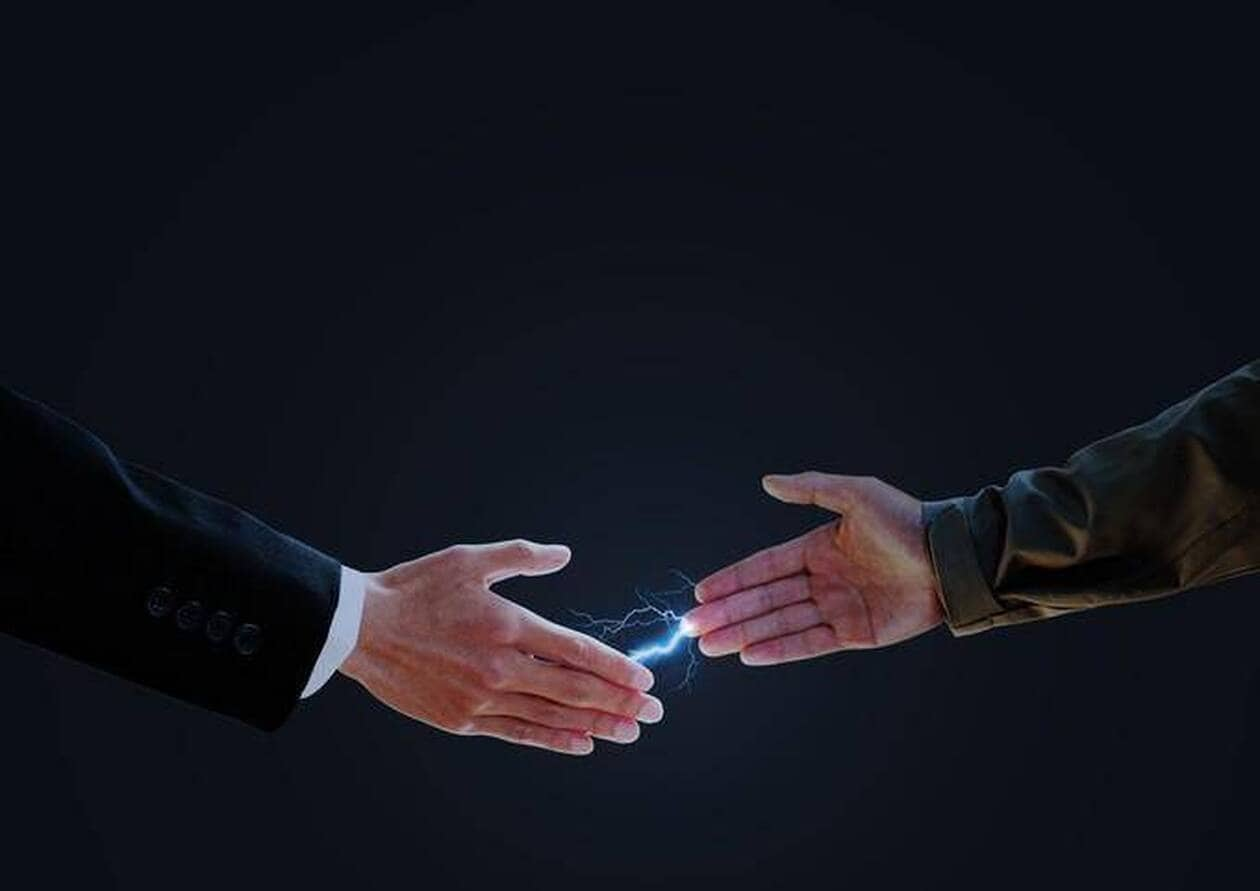You’re walking along, you reach out to someone… and bang! A small shock runs through your fingers. Surprising, sometimes slightly unpleasant, often misunderstood: this feeling that someone is « electrocuting » you is not uncommon. But then, what exactly is happening? And above all, is it dangerous? Rest assured: not at all. But it is very interesting.
Static electricity, a common phenomenon

In short: we all carry a small electrical reserve within us.
Why does this happen to you more often than to others?

- Clothing: Polyester, wool, and other synthetic fibers generate more friction (and therefore static electricity).
- Ambient air: In winter or in a dry climate, humidity is low and the electrical charge is less easily dissipated. As a result, it accumulates.
- Shoes: Rubber soles insulate and prevent the charge from dissipating. And a carpeted floor further accentuates this phenomenon.
- Activity: The more you move, especially on synthetic surfaces, the more the load increases.
- The body: Depending on skin hydration or perspiration, some people are more sensitive to static electricity.
Is it dangerous for health?

Be careful, however, if you wear:
- a pacemaker (cardiac stimulator),
- or sensitive medical devices.
In rare cases, static electricity can cause interference. If this is your situation, avoid very dry environments, choose cotton clothing, and maintain a good humidity level.
Can we avoid these discharges?
Not completely, but there are ways to limit them:
- Wear clothing made from natural fibers (cotton, linen).
- Drink enough water and moisturize your skin regularly.
- Use a humidifier in winter.
- Touch a metal surface (like a doorknob) with a metal object before shaking someone’s hand: the charge will dissipate painlessly.
- Opt for shoes with conductive soles if you are particularly sensitive.
Bottom line: No one is « electrocuting » you out of mystery or with a hidden agenda. It’s nothing more than a little play of electrons… made perceptible by a static discharge.
